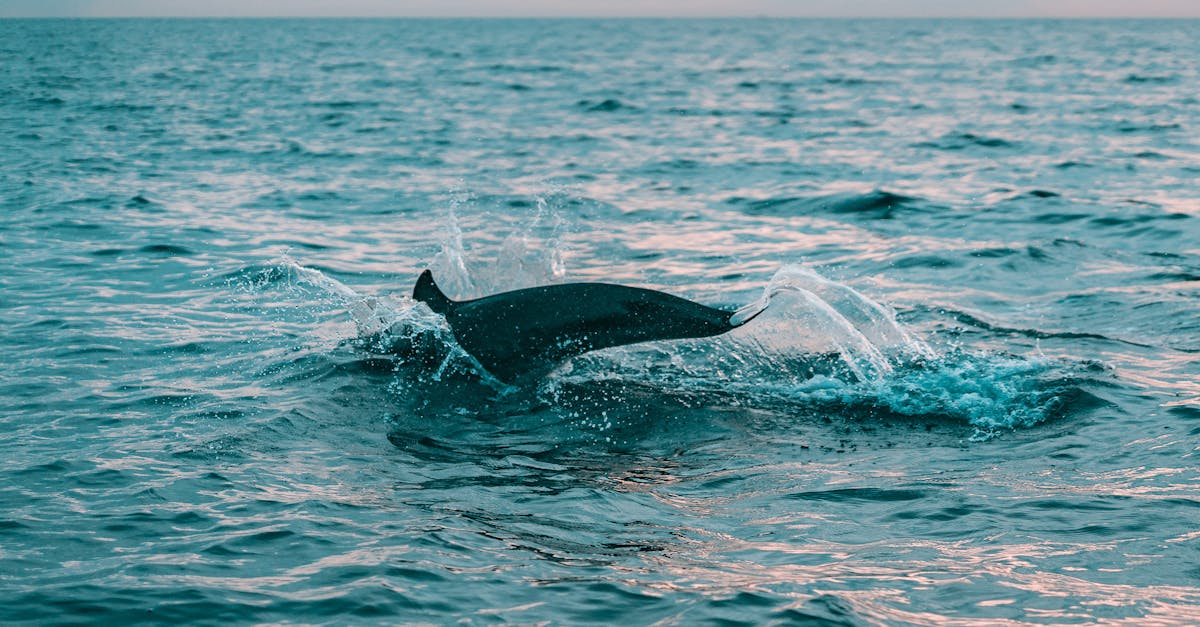Are you an aspiring artist who wants to learn how to draw a dolphin? Look no further! In this guide, how to draw a dolphin, we will provide you with step-by-step instructions on how to create a stunning dolphin illustration. From understanding the anatomy of a dolphin to learning the depth and details of their features, this article will cover everything you need to know to create a beautiful dolphin drawing. Whether you are a beginner or a seasoned artist, our easy dolphin drawing guide will provide you with the tips and techniques to bring your dolphin sketch to life.
Main Points:
- Understanding the anatomy of a dolphin
- Step-by-step dolphin drawing tutorial
- Depth and details of dolphin features
- Dolphin sketching tips and techniques
- Illustration instructions for creating a stunning dolphin art
Understanding Dolphin Anatomy for Drawing
When it comes to drawing dolphins, it is important to have a good understanding of their anatomy. This will help you create more realistic and accurate depictions of these amazing creatures. Below are some key points to consider when drawing dolphins:
Key Points to Consider:
- Body Shape: Dolphins have a sleek, torpedo-shaped body that tapers at both ends. Understanding this shape will help you capture the essence of a dolphin in your drawings.
- Flippers and Fins: Pay attention to the placement and size of the dolphin’s flippers and dorsal fin. These features play a crucial role in the overall appearance of the dolphin.
- Facial Features: Dolphins have a distinctive forehead, known as a melon, and a beak-like snout. Detailing these facial features will bring your dolphin drawings to life.
By paying close attention to these key points, you can improve your dolphin drawing skills and create more accurate representations of these incredible marine mammals.
Step-by-Step Guide to Drawing a Realistic Dolphin
Are you eager to learn how to draw a realistic dolphin? Follow this easy dolphin drawing guide to bring these intelligent and graceful creatures to life on paper. With these dolphin sketching tips and dolphin art techniques, you’ll be able to create a striking and lifelike image of a dolphin in no time.
Materials You’ll Need
| Pencil | Drawing paper | Eraser | Blending stump |
|---|---|---|---|
| 2H to 6B range | Smooth, heavyweight | Kneaded or plastic | For blending shades |
Step 1: Basic Outline
Start by lightly sketching the basic outline of the dolphin using a 2H pencil. Pay close attention to the shape and proportions.
Step 2: Adding Details
Once you’re happy with the outline, use a softer pencil (4B to 6B) to add in the details such as the eyes, dorsal fin, and flippers. Remember to capture the sleek and streamlined shape of the dolphin.
Step 3: Shading and Blending
Use a range of pencils to create depth and shading. Pay attention to the play of light and shadow on the dolphin’s body. Blend the different shades together using a blending stump for a smooth and realistic look.
By following these steps and incorporating these dolphin art techniques, you’ll be able to create a stunning and realistic dolphin drawing that showcases the beauty of these incredible creatures.
Mastering Dolphin Proportions and Muscle Structure
In order to accurately illustrate dolphins, it is crucial to master their proportions and muscle structure. Dolphins have a sleek and aerodynamic body with powerful muscles, especially in their dorsal fin and tail flukes. When drawing or painting a dolphin, pay close attention to their streamlined shape and the way their muscles ripple beneath the surface. Understanding the proportions and muscle structure of dolphins will result in lifelike and dynamic illustrations, capturing the grace and power of these magnificent creatures.
Using dolphin illustration instructions, proportions, and muscle structure, you can create stunning artwork that accurately portrays these intelligent and beautiful animals.
Exploring the Depth of Dolphin Drawing Techniques
Drawing dolphins can be a challenging yet rewarding experience for artists. The key to capturing the essence of these magnificent creatures lies in understanding the intricacies of their anatomy, movement, and unique characteristics.
When approaching dolphin drawing, it is important to pay attention to details such as their sleek body shape, the curvature of their fins, and the expressions in their eyes. Utilizing various shading techniques can help bring out the depth and texture of their skin, while studying their behavior in the wild can inspire dynamic and lifelike poses.
Techniques for Capturing Dolphin Drawings
1. Observation: Spend time observing dolphins in their natural habitat to understand their movements and postures.
2. Anatomy: Study the anatomy of dolphins to accurately represent their body structure and proportions.
3. Shading: Experiment with different shading techniques to create a realistic and three-dimensional effect.
| Tip 1 | Tip 2 | Tip 3 |
|---|---|---|
| Observe | Anatomy | Shading |
| Watch dolphins in the wild | Learn about their body structure | Experiment with light and shadow |
By integrating these dolphin drawing techniques into your artistic process, you can elevate your artwork and create captivating portrayals of these remarkable marine creatures.
Enhancing Your Dolphin Drawing with Light and Shadow
Mastering the art of drawing involves a deep understanding of light and shadow. When it comes to drawing a dolphin, paying attention to light and shadow can elevate your artwork to a whole new level. By strategically adding highlights and shadows, you can bring depth and realism to your dolphin drawing. Start by observing the light source and determining where the shadows fall. Use contrast to create a sense of dimension, and don’t be afraid to experiment with different textures to capture the glossy, sleek nature of dolphins. With practice and attention to detail, you can enhance your dolphin drawing with the power of light and shadow.
Capturing the Graceful Movement of Dolphins in Your Artwork
There is something truly mesmerizing about the graceful movement of dolphins as they glide through the water. Capturing this beauty in artwork requires a keen eye for detail and a deep understanding of the unique way that dolphins move. Whether you are an experienced artist or just beginning to explore the world of dolphin art, there are a few key techniques that can help you bring these magnificent creatures to life on canvas.
Understanding the Anatomy of Dolphins
To accurately capture the movement of dolphins in your artwork, it is essential to have a solid understanding of their anatomy. Study the way their sleek bodies slice through the water, the curve of their tails as they propel themselves forward, and the graceful arch of their movements. Pay attention to the way their muscles ripple beneath their skin and the way their eyes seem to gleam with intelligence and curiosity. By understanding these details, you can create artwork that truly captures the essence of these beautiful creatures.
Embracing Fluidity and Flow
Dolphins are known for their fluid, graceful movements, and it is essential to incorporate this sense of flow into your artwork. Consider using long, sweeping brushstrokes to mimic the arc of a dolphin’s body as it leaps from the water, or experiment with blending colors to create the iridescent sheen of their skin. Embracing fluidity in your artwork will help to convey the effortless beauty of dolphins in motion.
Conveying the Sense of Joy and Freedom
One of the most captivating aspects of dolphins is the sense of joy and freedom that they exude as they play in the waves. Look for ways to convey this emotion in your artwork, whether it’s through the use of vibrant colors, dynamic compositions, or the inclusion of other marine life. By capturing the sense of joy and freedom that dolphins embody, you can create artwork that not only celebrates their physical beauty but also their remarkable spirit.
“Dolphins are not just creatures of the sea; they are the embodiment of joy and freedom, and capturing their graceful movement in artwork allows us to share in that sense of wonder and delight.” – Marine Wildlife Artist, Emily Collins
When capturing the graceful movement of dolphins in your artwork, remember to observe, embrace, and celebrate the unique beauty and spirit of these magnificent creatures. With a careful eye for detail and a deep appreciation for their essence, you can create artwork that truly honors the remarkable grace of dolphins.


